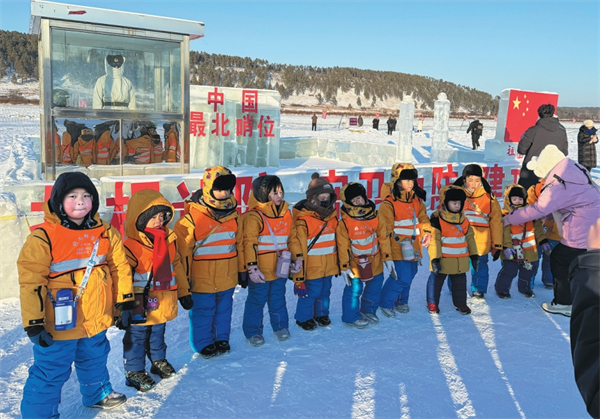Home>Harbin Today
Life of Pi without CGI, in NE China
Updated : 2014-06-18
By ( Xinhua )
Scarily reminiscent of the movie Life of Pi, a fisherman recorded his encounter with a wild Siberian tiger in the Sino-Russian border region in Northeast China's Heilongjiang province.
Zhang Mingyu, from Fuyuan County, saw something swimming in the Wusuli River on the morning on June 11, when he was making a delivery to the Sanjiang Nature Reserve.
"At first, I thought it was a deer, then it suddenly turned round, roared at me and tried to grab the side of my boat," the 32-year-old said. He was so scared and jumped from the bow to the stern.
"Black and yellow stripes on its head were very clear. It was a tiger!" Zhang struggled to fend off the tiger and stop it climbing aboard, but also tried to avoid harming it, as the tiger is one of China's most protected animals.
The struggle went back and forth as the tiger tried to clamber on to the boat, and Zhang strove to repel his unwelcome boarder. "It tried on the other side, and I pushed it back again," he said. They struggled like that for several rounds until the tiger finally gave up and swam off.
Zhang recorded a 10-minute video on his mobile of the tiger swimming in the river until it went ashore, leaving clear footprints in the sand.
His experience was uncannily similar to scenes in the Life of Pi by Oscar-winning director Ang Lee.
According to Sanjiang Nature Reserve's press officer Wu Zhifu, the video was sent to the Feline Research Center of the State Forestry Administration. The reserve also sent a team into the field who found many signs of tiger in the vicinity. The video and footprints indicated a healthy wild Siberian tiger.
Sanjiang is one of only three black earth wetland reserves in the world. Bordering three Russian nature reserves, it is a triangle formed by the Heilong and Wusuli rivers. The Sanjiang wetland has a well preserved primitive ecological system with little human disturbance. In recent years, tiger spoor has often been found in the reserve.
"Thanks to the natural environment here, there are abundant wild animals such as hare and roe deer, the food of the wild tiger. The reserve has become a paradise for the rare beast," Wu said.
Wild tiger roams across an extremely large range, using the thick forest in Russia as the "bedroom" and the wetland in China as the "dining room".
Local residents see them as friends or even companions and they cannot bear to hurt them. The reserve provides public education for local residents to help them understand the importance of the wetland and its inhabitants, Wu said.
"Locals always say 'these animals do not have an easy life, traveling such a long way for a meal'. The fisherman just whacked the tiger with his oar to frighten it, but would not have hurt it much," he said.
Sanjiang works closely with the three Russian reserves on wild Siberian tigers, Amur leopards and other rare wild animals.
Siberian tigers, one of the world's rarest mammals, live in eastern Russia, northeast China, and northern parts of the Korean Peninsula. Fewer than 500 remain in the wild.
China puts its own number of wild Siberian tigers at between 18 and 22.

Harbin ramps up childcare services
A new comprehensive service center for childcare in Harbin is expected to be finished by the end of the year.
-
Talent policies drive enterprise development in Harbin
Harbin's "30 New Talent Policies" represents an iterative upgrade to the talent policy system, helping attract and retain talent to bolster economic and social development.
-
Official website of 2025 Asian Winter Games goes live
Harbin, the host city of the 9th Asian Winter Games, has announced that the official website for the 2025 event has recently gone live.
-
Harbin launches measures to facilitate more foreign trade
In the first three quarters of 2023, the total import and export value of Heilongjiang province's goods trade hit 218.22 billion yuan.





